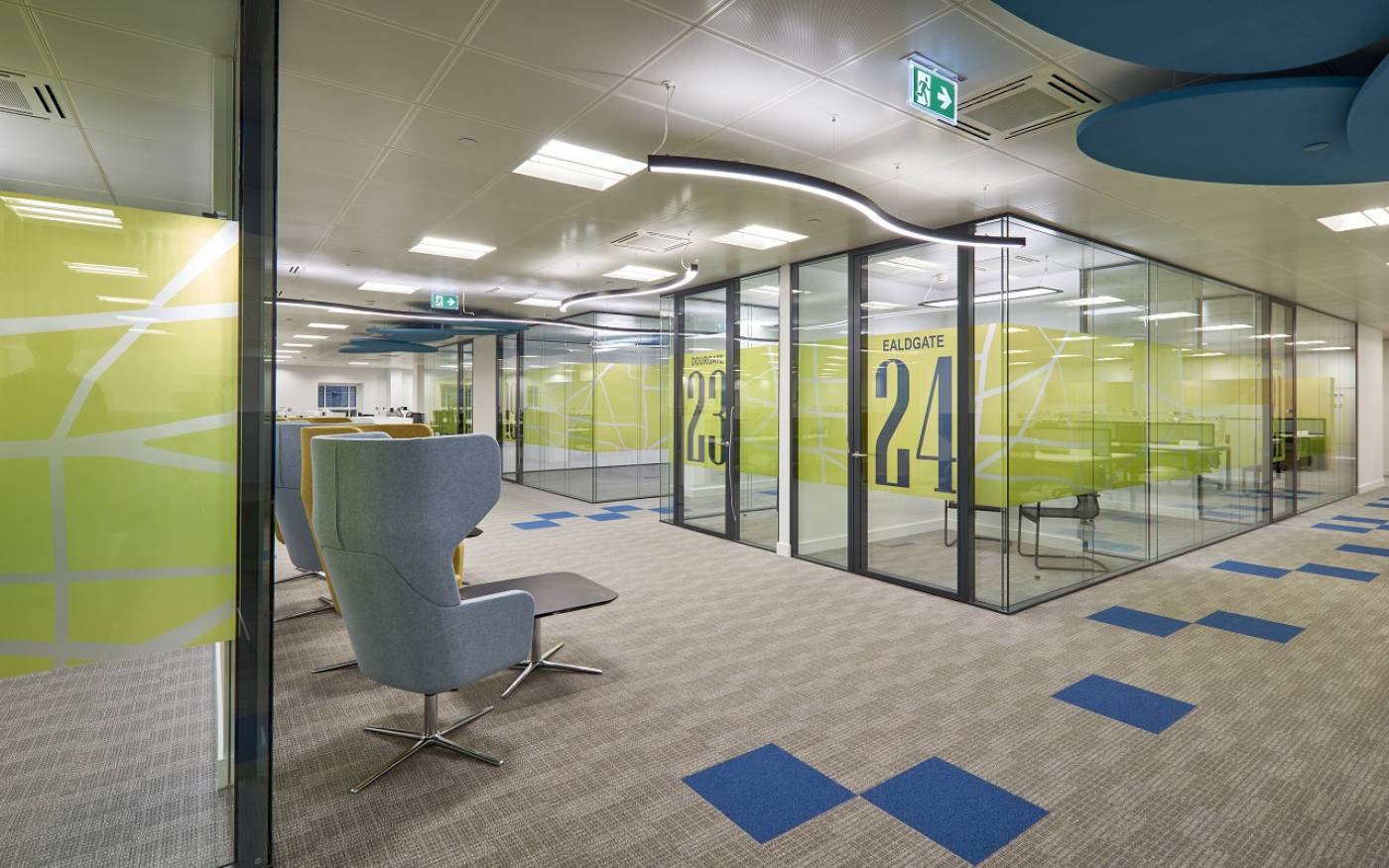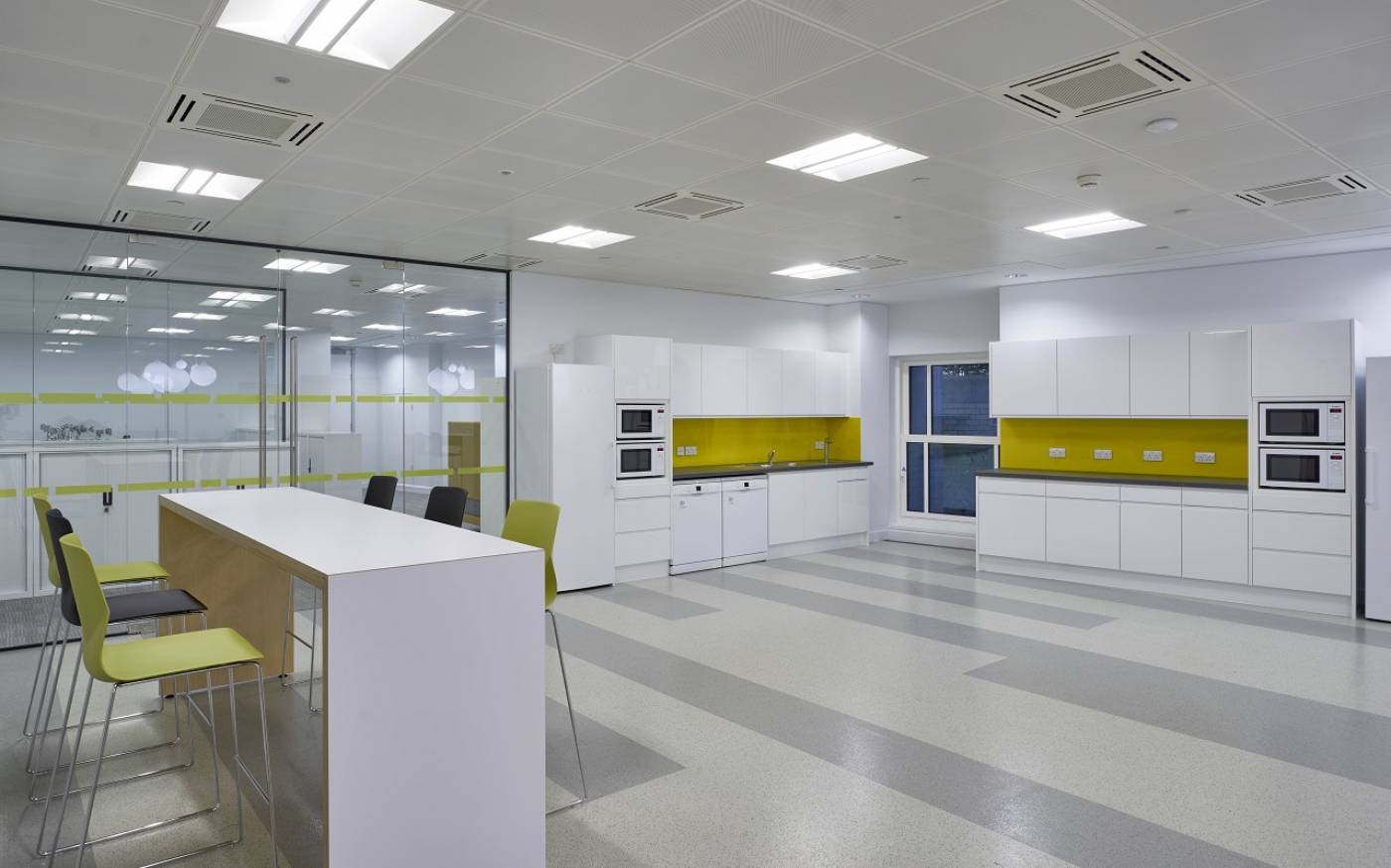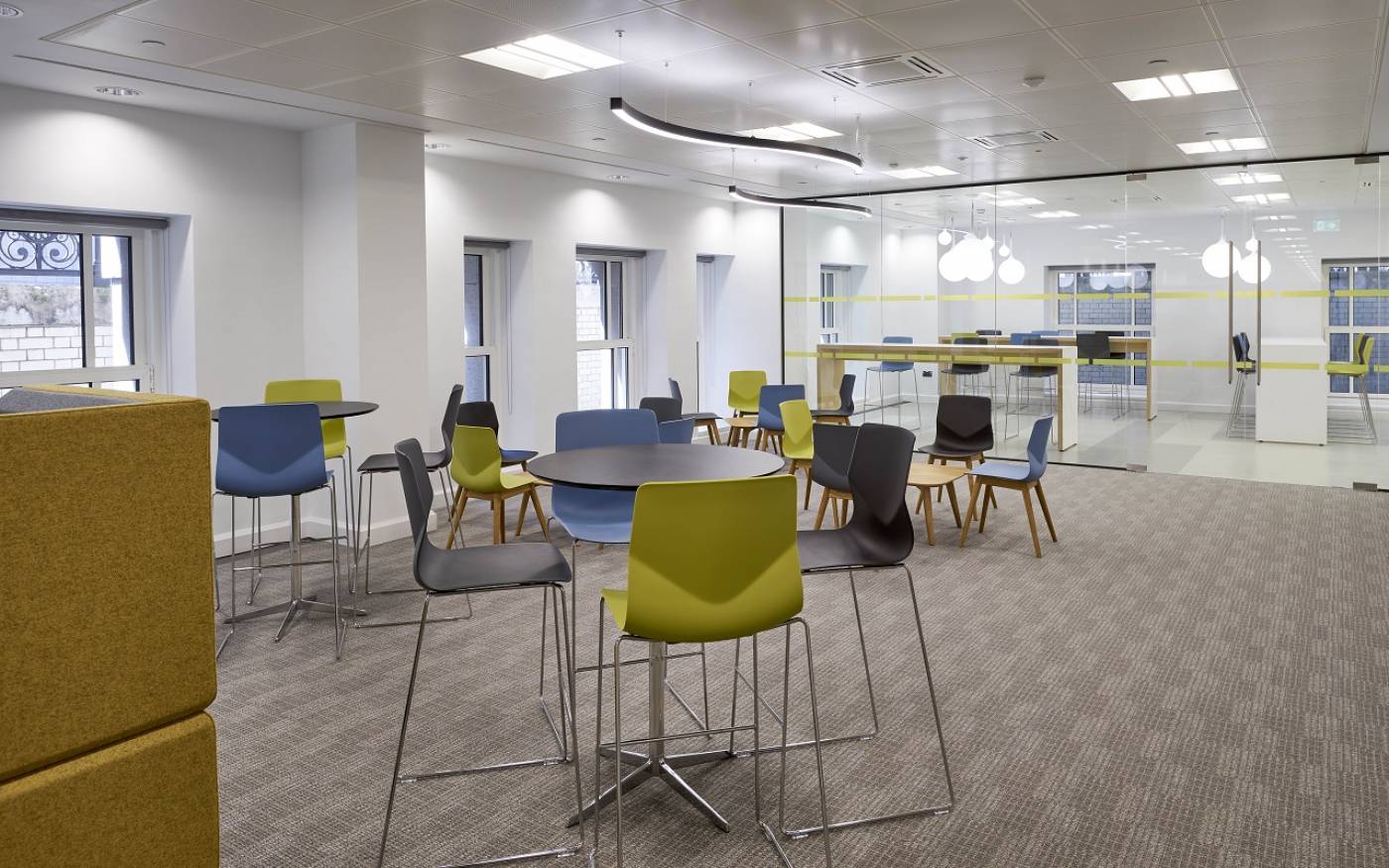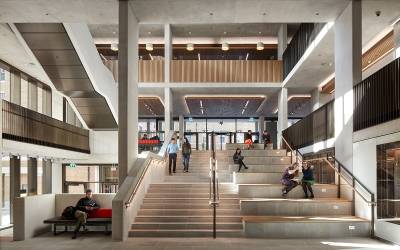St. Martin’s Le Grand sustainable fit-out
The fit-out of St Martin’s Le Grand achieved the first-ever Gold rating under the new Ska Higher Education standard which raises the bar for sustainability best practices.
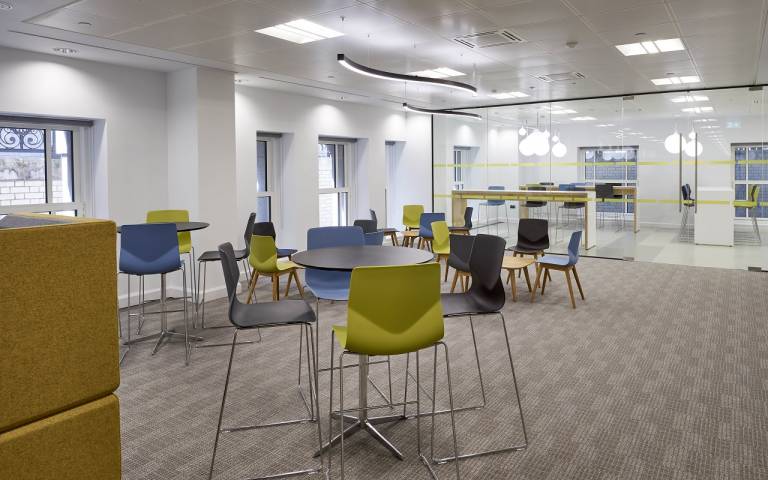
9 January 2020
Supporting the relocation of over 300 UCL staff, the project has transformed 2,200 sq ft of office accommodation into a collaborative, high-quality open-plan workspace. In association with Royal Institution of Chartered Surveyors (RICS), members of the UCL Sustainability Team were development partners for SKA HE. This resulted in additional enthusiasm to be the first to secure the highest rating, and a degree of competition with other institutions.
Sustainability features:
- Waste and transportation to site were kept to an absolute minimum: packaging had to be reusable and suppliers were encouraged to use innovative delivery and take-back options. Glazed partitions were delivered on a bespoke carrier able to carry eight door frames, instead of four. Pallets, cable drums and paint containers were collected by suppliers while blinds and plumbing came in reusable packaging.
- Minimising plasterboard waste: reusing offcuts and carefully managing deliveries resulted in a very low wastage rate of 4.3%, well below the Ska benchmark of 15%.
- Most of the existing carpet was reused within the office; however, worn out carpet and offcuts were collected by the carpet manufacturer as part of their take-back scheme.
- Lights were reused where possible or replaced with new, energy-efficient LED fittings. For areas below street level careful attention was paid to providing a variety of lighting and reflective surfaces to mimic natural light.
- Sustainable materials were prioritised, including those with high-recycled content or environmental product certifications (such as ‘Cradle to Cradle’) and all timber came from certified sustainable sources (FSC or PEFC).
- To optimise air quality during the fit out, low-VOC paint was used and sensors monitored VOC levels. The building management system has also been enhanced with integrated CO2 sensors, which trigger the release of fresh air at a specific threshold.
- Interior design included elements of biophilia which promotes the link between humans and nature to improve physical and emotional health. This included ceiling panels inspired by clouds which are also noise-absorbing to mitigate the distractions of the open plan environment.
 Close
Close


